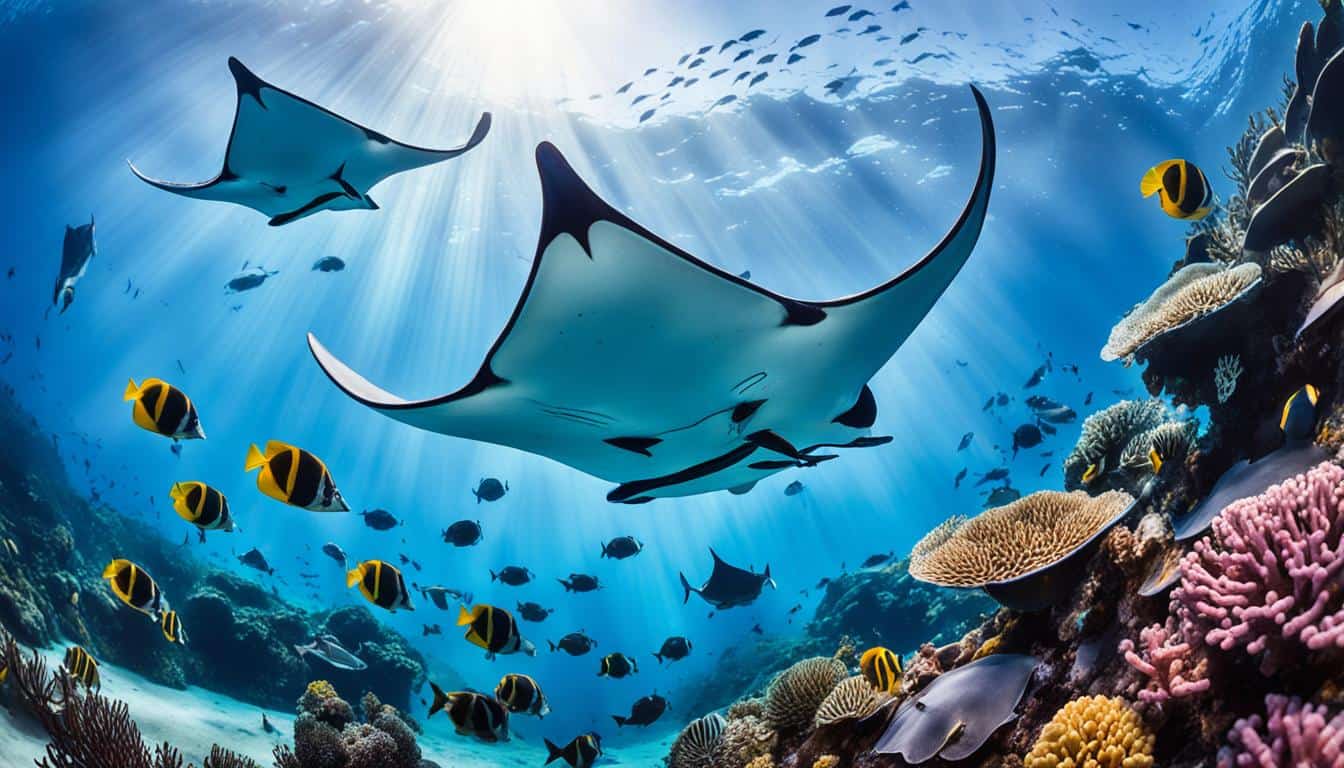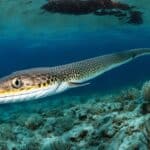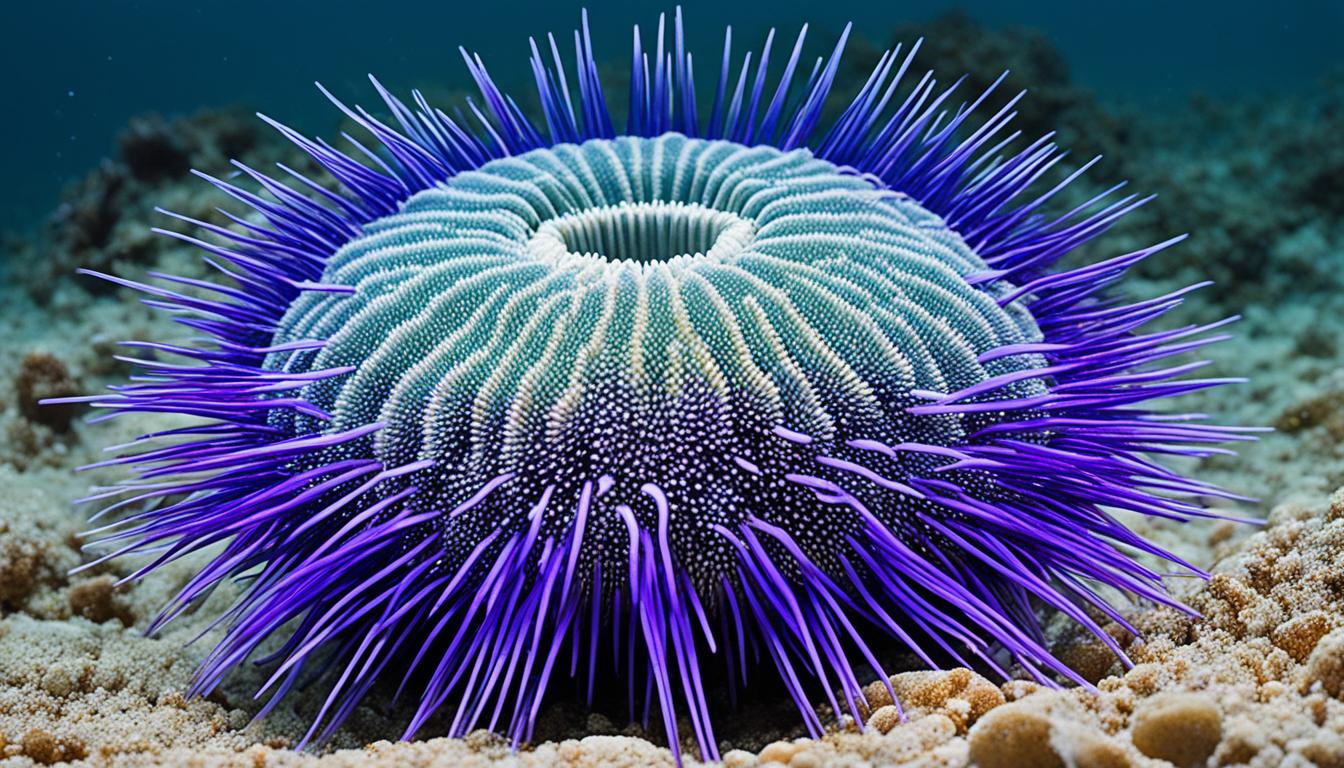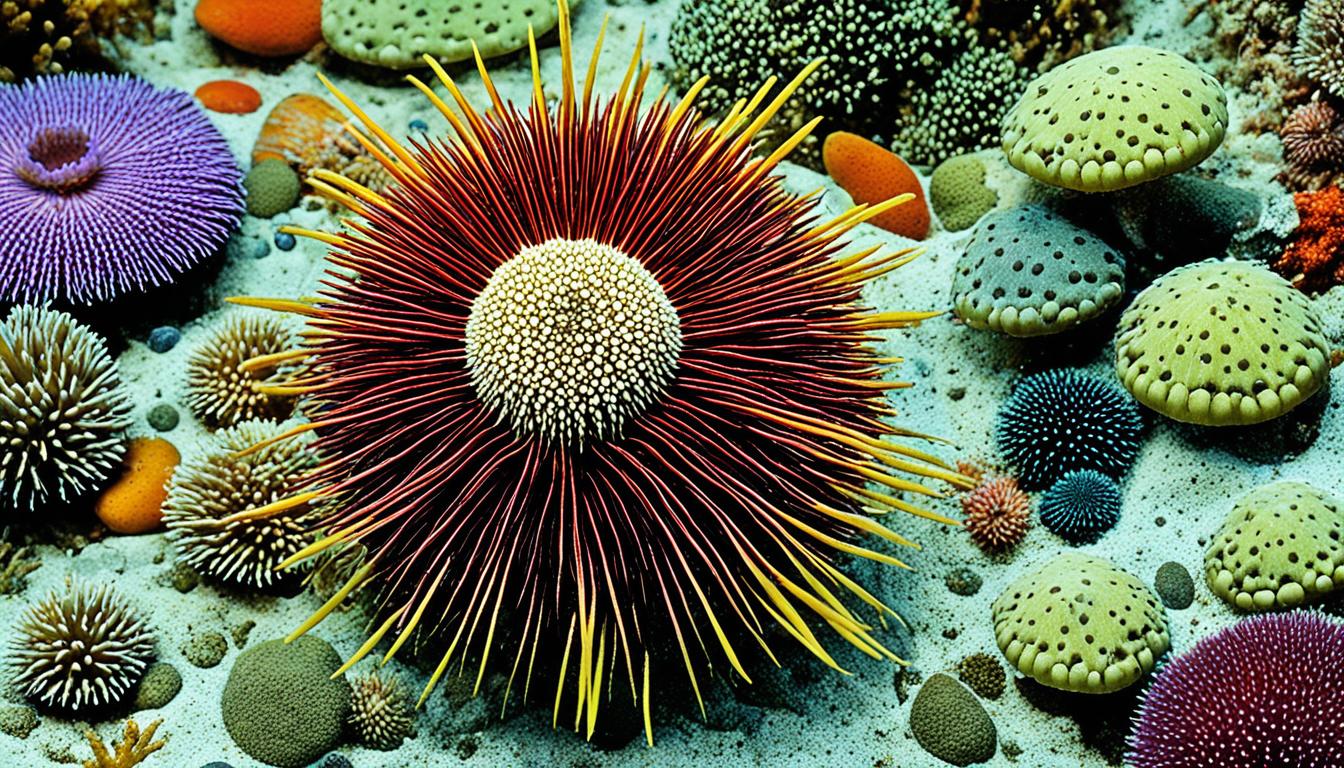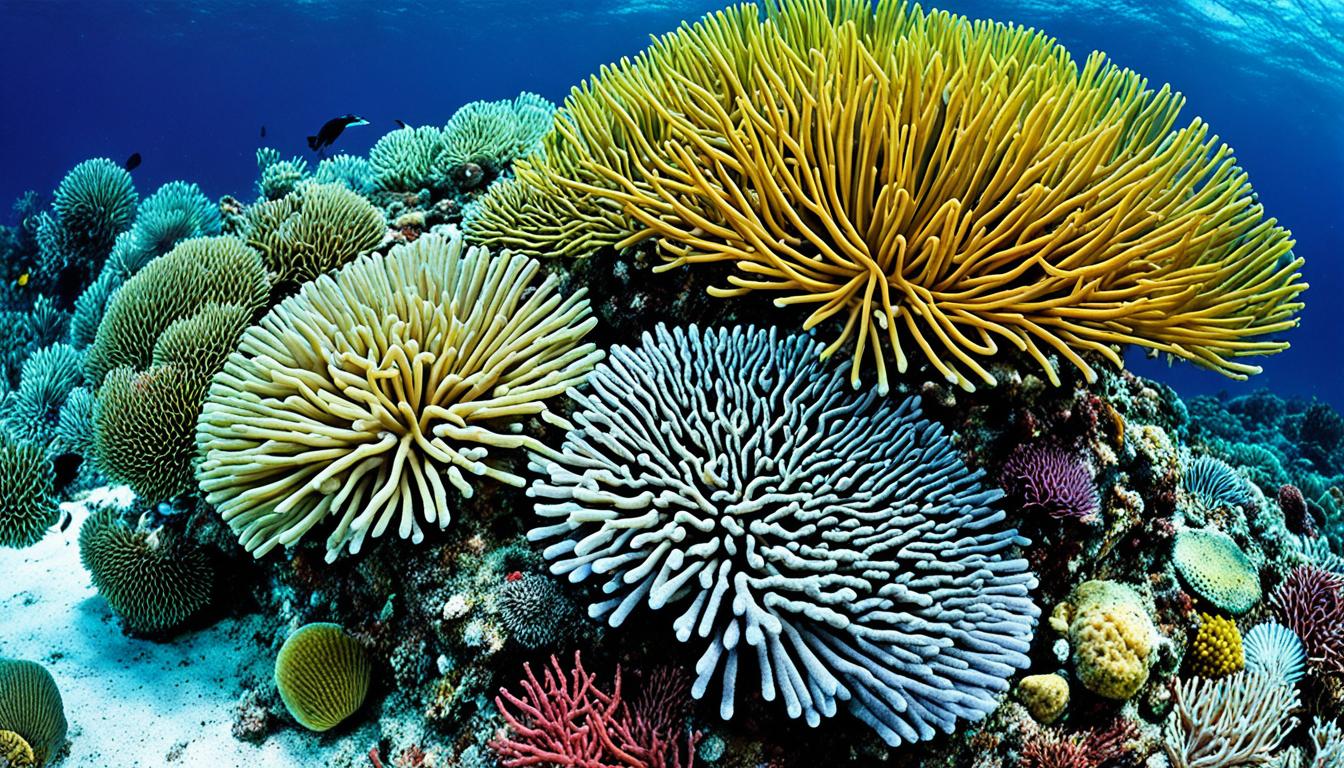Manta rays are known for their graceful swimming abilities. They live in oceans all over the world. Their home includes temperate, tropical, and subtropical waters in the Indian, Atlantic, and Pacific Oceans.
There are two main types: the giant oceanic manta ray (Manta birostris) and the reef manta ray (Manta alfredi). The giant manta ray lives in deeper waters. It travels a wide area. The reef manta ray prefers coastal areas with lots of coral reefs. This gives it easy access to food.
Knowing where manta rays live helps with snorkeling and diving plans. It also helps with conservation efforts to protect these amazing creatures.
Manta Ray Habitat: An Overview
Learning about the manta ray habitat helps us understand how these amazing creatures live. They live in warm, tropical, and subtropical waters. Each type of manta ray has its own favorite places to be.
This guide will explore the different manta ray species and where they live. It will show how important they are to their ecosystems.
Types of Manta Rays
There are two main kinds of manta rays, each living in different places. The giant oceanic manta ray can grow up to seven meters wide. It lives in the open ocean, showing great skill in deep waters.
The reef manta ray is smaller, measuring three to five meters. It stays near the coast, often seen over coral reefs. Knowing about these manta rays helps us understand where they live.
Natural Environment
The place where manta rays live affects how they eat and mate. They like areas with lots of plankton, which they need to eat. This brings them to places with lots of food, like upwelling zones or shallow reefs.
Things like water temperature and saltiness are also key to their habitat. Manta rays go to certain areas because these conditions are just right. This shows their travel patterns and where they prefer to live.
| Manta Ray Type | Size (meters) | Habitat Preference |
|---|---|---|
| Giant Oceanic Manta Ray | Up to 7 | Open waters |
| Reef Manta Ray | 3 to 5 | Coastal environments |
Where do manta rays live? A Global Perspective
Manta rays live in oceans all over the world. They are very adaptable to different places. They love warm waters near the equator, especially where coral reefs are found.
Some top places to see these amazing creatures are:
- The coastlines of Hawaii
- The pristine waters of the Maldives
- The diverse marine ecosystems of Japan
Giant manta rays can be found all over the globe. But reef mantas stick to the Indo-Pacific region. This shows how each type of manta ray has its own special place to live.
Things like water temperature, food, and ocean currents affect where they live. These factors help decide where manta rays will be found.
- Water temperature
- Availability of food
- Ocean currents
Knowing how these elements work together helps us find manta rays in the wild. It’s a way to connect with these incredible animals in their natural setting.
Manta Ray Distribution and Behavior
Manta rays show interesting behaviors across different ocean areas. Learning about their movements and group habits helps us understand these amazing creatures better. It also shows us where they live.
Migration Patterns
Manta rays move a lot to find the best places to eat and warm waters. Their paths change with the seasons. The giant manta, for example, travels more than a thousand miles through the ocean.
These trips can change from year to year because of changes in the environment and food. This makes it hard for scientists to study manta ray behavior.
Group Dynamics
Manta rays often hang out together, especially when they’re eating. They use *cooperative hunting* to catch food. The size of these groups changes based on things like how much food there is and breeding.
Where manta rays live can affect how they interact with each other. By watching them, we can learn about their way of communicating and living together. This is important for their survival.
| Aspect | Detail |
|---|---|
| Migration Distance | Over 1,000 miles |
| Common Feeding Method | Cooperative hunting |
| Social Structure | Varies based on food availability |
| Environmental Influences | Seasonal changes and prey availability |
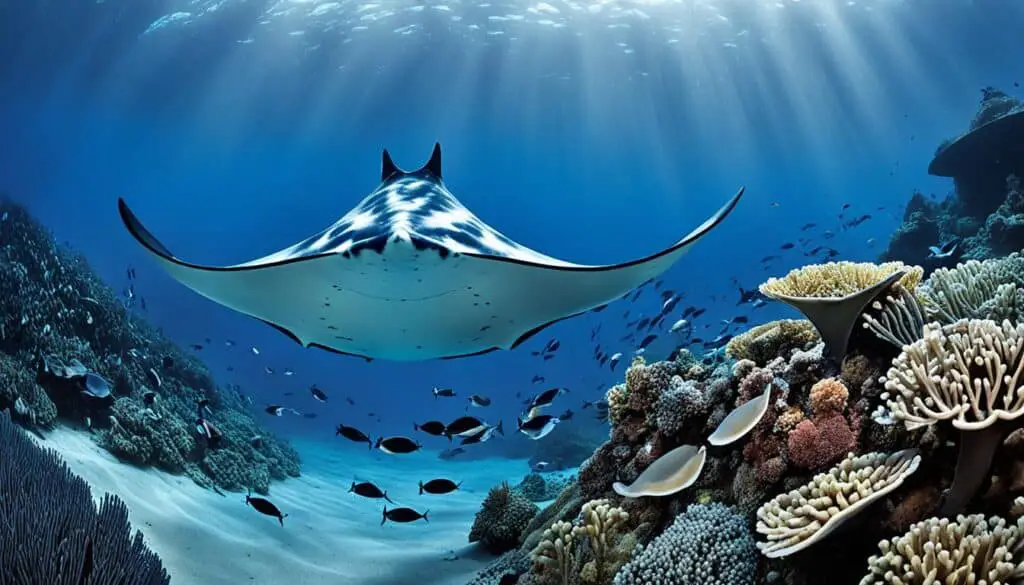
Best Locations to Spot Manta Rays
For those excited about manta ray tourism, finding the best places to see manta rays can make your trip unforgettable. These beautiful creatures live in certain areas around the world. They draw in people who want to see them up close. Here are some top spots for diving and swimming with manta rays.
Top Diving Destinations
Many places are great for seeing manta rays. These spots have the right conditions for these amazing animals. Here are some of the best places to see them:
- Hawaii: The Kona coast is famous for manta ray sightings. It has clear waters and lots of marine life.
- Bali, Indonesia: Bali is a top spot for seeing manta rays. It has a rich marine life and beautiful underwater scenes.
- The Maldives: The Maldives, especially Baa Atoll and Ari Atoll, are known for their beautiful coral reefs and manta rays.
- Galapagos Islands: This UNESCO World Heritage Site is great for seeing manta rays. It also offers unique wildlife experiences.
Manta Ray Moonlight Swims
For a special adventure, try a manta ray moonlight swim. This lets you see mantas feeding under the moonlight. You can have close encounters in various places, with expert guides leading the way. These swims happen in:
| Location | Notable Features | Best Time |
|---|---|---|
| Kona, Hawaii | Night snorkeling to watch mantas feeding | Year-round, best during summer months |
| Bali, Indonesia | Guided night dives near Nusa Penida | April to October |
| Maldives | Nightly excursions in atoll regions | Best during calm weather months |
Manta Ray Ecosystem and Conservation
Manta rays are key to the ocean’s balance as filter feeders. They keep the marine life in check. Their eating habits support a healthy food chain, helping many species to flourish. But, they face threats like fishing, habitat loss, and climate change.
To save these amazing creatures, we need to act. Creating safe areas in the sea helps protect their homes. Supporting eco-friendly tourism lets us enjoy manta rays while helping their cause. Groups like Manta Trust work hard to monitor their numbers, teach people, and push for laws to protect them.
Every action you take can help manta rays and their homes. Being careful around manta rays helps keep their habitats safe for the future. The more we spread the word and help protect them, the better chance they have to survive.
FAQ
Where do manta rays typically live?
Manta rays live in oceans all over the world. They like warm and tropical waters. You can find them in the Indian, Atlantic, and Pacific Oceans.
What are the different types of manta rays?
There are two main kinds of manta rays. The giant oceanic manta ray can grow up to seven meters long. It lives in open waters. The reef manta ray is smaller, between three to five meters, and lives near coral reefs.
What factors influence manta ray habitat?
Many things affect where manta rays live. These include water temperature, food, and ocean currents. These factors help decide where they go and how they move.
How far do manta rays migrate in search of food?
Giant manta rays travel long distances for food. They can go over a thousand miles. They move to find warmer waters and more food.
Where are the best locations to see manta rays?
To see manta rays, go to Hawaii’s Kona coast, Bali, the Maldives, or the Galapagos Islands. These places are great for spotting them.
What is the significance of manta rays in their ecosystems?
Manta rays are important as filter feeders. They help keep the ocean healthy by balancing the food chain.
What are the current threats facing manta rays?
Manta rays are threatened by fishing, losing their homes, and climate change. We need to work together to protect them.
How can I responsibly interact with manta rays?
When with manta rays, follow rules set by conservation groups. This helps keep their home safe for the future.

